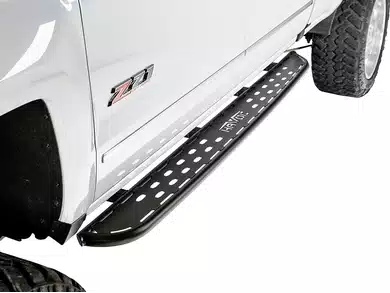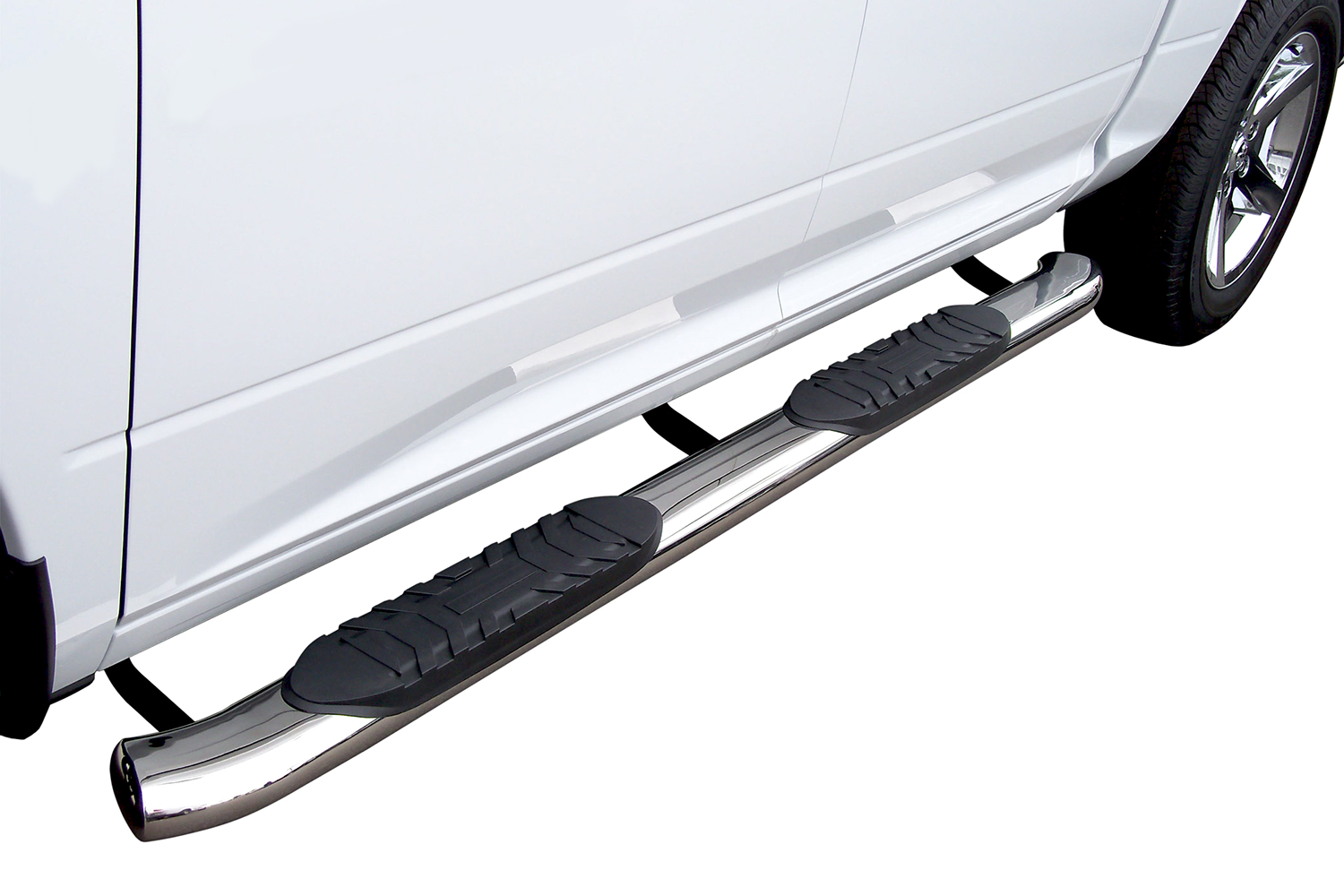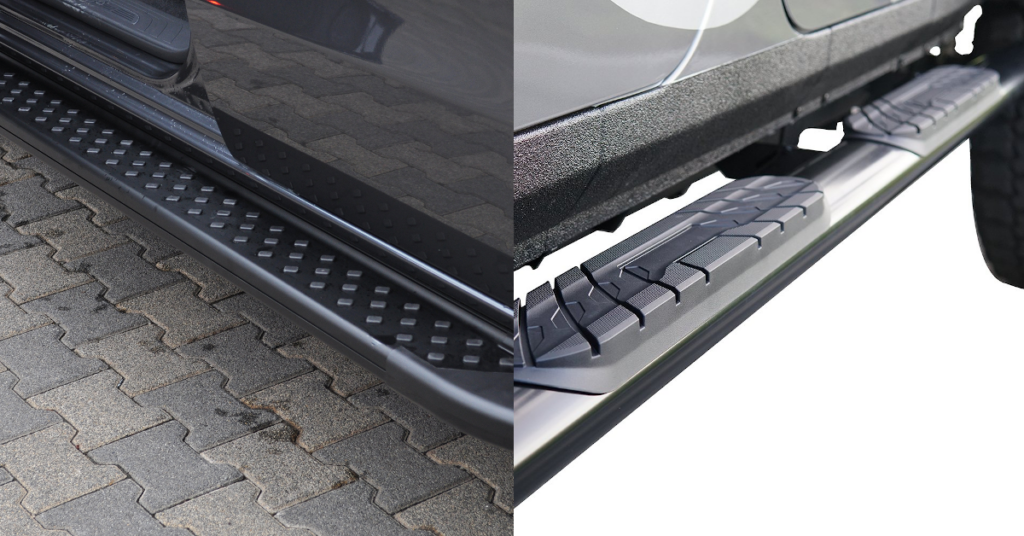If you’re in the market for aftermarket accessories to enhance your vehicle’s functionality and appearance, you’ve likely come across two popular options: running boards and nerf bars. While both serve similar purposes, they have distinct differences that can significantly impact your choice. In this blog, we’ll dive into the world of running boards and nerf bars, exploring their purposes, designs, and the key distinctions between them.

Running Boards
Running boards, also known as side steps or step boards, are functional accessories designed to help passengers easily access the vehicle’s cabin. These boards typically run along the sides of the vehicle, providing a sturdy platform for stepping in and out. They are especially useful for larger vehicles like trucks, SUVs, and vans, which tend to sit higher off the ground.
Here are some key characteristics of running boards:
- Length: Running boards are usually longer than nerf bars, extending from the front wheel to the rear wheel or even further along the vehicle’s side.
- Width: They tend to be wider, offering a broader stepping surface for convenience and stability.
- Material: Running boards are often constructed from materials like aluminum, steel, or plastic, chosen for their durability and resistance to rust.
- Style: Manufacturers offer various designs and finishes, allowing you to choose a running board that complements your vehicle’s aesthetics.

Nerf Bars
Nerf bars, also called step bars or tube steps, serve a similar purpose to running boards but come with their own unique style. These accessories are typically tubular in shape, resembling a bar or a tube. Nerf bars are favored for their sleek appearance and are often chosen to enhance a vehicle’s aesthetics.
Here are some key characteristics of nerf bars:
- Design: Nerf bars are generally tubular, which contributes to their distinctive appearance. They come in various diameters and styles, including round, oval, and rectangular.
- Length: Nerf bars are shorter than running boards, typically extending from the front door to the rear door.
- Width: They offer a narrower stepping surface compared to running boards.
- Material: Similar to running boards, nerf bars are usually made from materials like stainless steel or aluminum, known for their corrosion resistance.
Key Differences Between Running Boards and Nerf Bars
Now that we’ve explored the individual characteristics of running boards and nerf bars, let’s highlight the key differences between them:
- Length and Width: Running boards are longer and wider than nerf bars, providing a more extensive and stable stepping area. This can be especially beneficial for larger vehicles with higher ground clearance.
- Style: Nerf bars are often chosen for their aesthetic appeal, as their tubular design adds a sporty or rugged look to the vehicle. Running boards, on the other hand, prioritize functionality over style, although they still offer a range of design options.
- Functionality: Running boards are primarily designed for ease of access, making them a practical choice for passengers, especially children or the elderly. Nerf bars offer the same functionality but with a greater emphasis on appearance.
- Vehicle Type: The choice between running boards and nerf bars may also depend on the type of vehicle you own. Running boards are particularly popular for trucks and larger SUVs, whereas nerf bars are favored for their aesthetic enhancement on a variety of vehicles, including trucks, SUVs, and even some cars.
In the running boards vs. nerf bars debate, your choice ultimately depends on your vehicle type, intended functionality, and personal preferences. Running boards prioritize practicality, offering a wider and longer stepping surface, while nerf bars prioritize style with their tubular design. If you are in the market for running boards or nerf bars Truxx Outfitters is your ultimate destination for nerf bars and running boards, boasting an extensive selection and exceptional customer service


